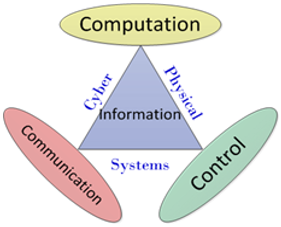Assistive Tools for Machine Communication for Preventing Children and Disabled Persons from Electric Hazard Using Cyber Physical System
Keywords:
Cyber Physical System (CPS), Wireless Network, Machine-to-Machine (M2M), Home Automation System, Machine Learning, Electric HazardAbstract
The determination of this research is to conduct a survey on how current technical electrical equipment are replacing human daily housework. Different electrical gadgets are installed in each home, depending on the necessities. At the same time, the number of people who are exposed to electric hazards is growing. According to a report, children and disabled people are the main sources of electric danger pointing devices. It cautions due to a lack of information regarding electric equipment. As a result, monitoring systems must be developed in order to prevent electric hazards for children and handicapped people. Machine learning techniques are used to learn about and control machine activity. Communication between heterogeneous systems is provided by a cyber-physical system. These two technologies are combined in the proposed effort to create a gadget that can manage electric hazards for children and the disabled. Motion sensors are used in the proposed work to continually monitor the object's movement. If an object comes close to an electric machine, such as a washing machine, refrigerator, or ironing board, the circuit will automatically cut off unless the object moves away from the electric equipment. In addition, the gadget may create a sound signal to warn youngsters about the dangers of electronic devices and disable them. The suggested work, in addition to machine learning and cyber physical systems, makes use of the Internet of Things to link the status of devices and objects to the responsible personnel, all of whom are in an inaccessible place. The Internet of Things may help with communication, control, and data processing integration across several systems. The Internet of Things allows things to be sensed and controlled remotely. The Internet of Things (IoT) Wireless House Automation System (WHAS) is a system that combines computers and GPRS to automate basic house functions and features. An automated house is frequently referred to as a smart home since it uses GPRS to connect to the internet from anywhere in the globe. A cloud-based home automation system with IoT that uses the Wireless Sensors which is used to connect the controller and the user section. Children and handicapped people will have a safer existence as a result of the use of technological equipment
Downloads
References
TullioFacchinetti and Marco L. Della Vedova ,“Real-Time Modeling for Direct LoadControl in Cyber-Physical Power Systems (2011),” IEEE Transactions On Industrial Informatics, Vol. 7, No. 4, November 2011,pp. 689-698.
L. Sha, S. Gopalakrishnan, X. Liu, and Q. Wang, “Cyber-physical Systems: A New Frontier,” Proceedings ofIEEE International Conference on Sensor Networks, Ubiquitous and Trustworthy Computing (SUTU), June2008, pp. 1-9.
Shushan Zhao, AkshaiAggarwal, Richard Frost, XiaoleBai, “A Survey of Applications of Identity-BasedCryptography in Mobile Ad-Hoc Network,” IEEE Communications Surveys & Tutorials, Vol. 14, No. 2,SecondQuarter2012,pp.380-400.
Rongxing Lu, Xu Li, Xiaohui Liang, and Xuemin(Sherman) Shensu,“GRS: The Green, Reliability, andSecurity of Emerging Machine to Machine Communications,” IEEE Communications Magazine, April 2011,pp.28-35.
Geng Wu, ShilpaTalwar, Kerstin Johnsson, NageenHimayat, and Kevin D. Johnson, “M2M: From Mobile to Embedded Internet(2011),”IEEECommunicationsMagazine,April2011,pp. 36-43.
Yan Zhang, Rong Yu, ShengliXie, Wenqing Yao and Yang Xiao, “Home M2M Networks: Architectures, Standards,and QoS Improvement,”IEEECommunicationsMagazine, April2011,pp.44-52.
JorgSwetina,GuangLu,PhilipJacobs,FrancoisEnnesser,andJaeseungSong“TowardAStandardizedCommon M2M Service Layer Platform: Introduction To OneM2M ,” IEEE Wireless Communications , June2014, pp.20-26.
Michael Haus, Muhammad Waqas, AaronYi Ding, Yong Li, SasuTarkoma, and JörgOtt, “Security andPrivacy in Device-to-Device (D2D) Communication: A Review,” IEEE Communications Surveys & Tutorials,Vol.19,No. 2,SecondQuarter2017,pp.1054-1079.
Shuyi Chen, Ruofei Ma,Hsiao-Hwa Chen, Hong Zhang, WeixiaoMeng, and Jiamin Liu, “Machine-to-MachineCommunications in Ultra-Dense Networks—A Survey,” IEEE Communications Surveys & Tutorials, Vol. 19,No.3, ThirdQuarter2017, pp.1478-1503.
Fabio Pasqualetti, Florian Dörfler, and Francesco Bullo, “AttackDetection and Identification in Cyber-Physical Systems” IEEETransactions On Automatic Control, Vol. 58, No. 11, November2013, pp.2715 -2729

Downloads
Published
How to Cite
Issue
Section
License
Copyright (c) 2023 S. Hemalatha, T. Tamilselvi, R. Saravana Kumar, A. G. Noorul Julaiha M. E, M. Thangamani, S. Lakshmi , Kamal Gulati

This work is licensed under a Creative Commons Attribution-ShareAlike 4.0 International License.
All papers should be submitted electronically. All submitted manuscripts must be original work that is not under submission at another journal or under consideration for publication in another form, such as a monograph or chapter of a book. Authors of submitted papers are obligated not to submit their paper for publication elsewhere until an editorial decision is rendered on their submission. Further, authors of accepted papers are prohibited from publishing the results in other publications that appear before the paper is published in the Journal unless they receive approval for doing so from the Editor-In-Chief.
IJISAE open access articles are licensed under a Creative Commons Attribution-ShareAlike 4.0 International License. This license lets the audience to give appropriate credit, provide a link to the license, and indicate if changes were made and if they remix, transform, or build upon the material, they must distribute contributions under the same license as the original.





